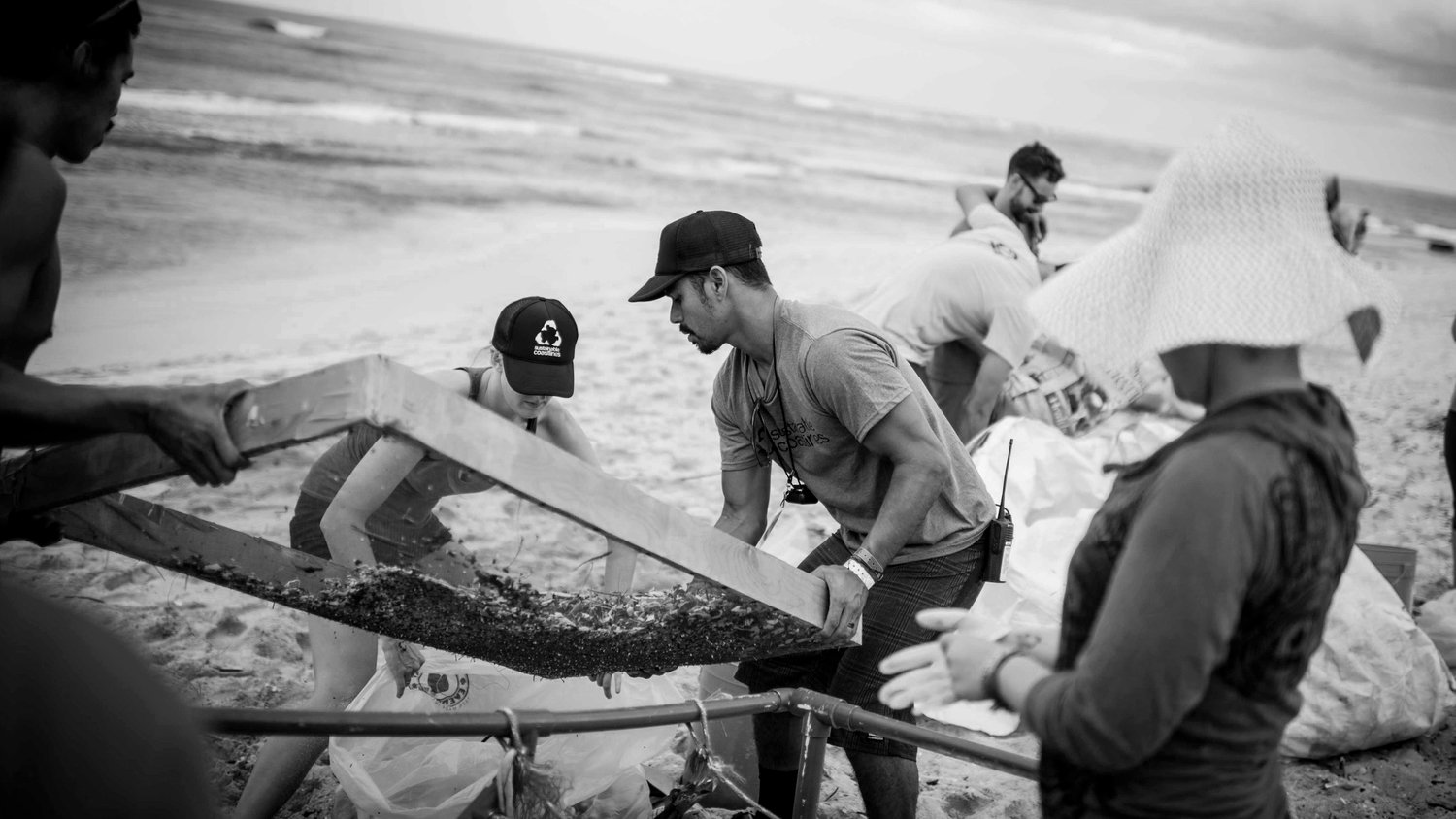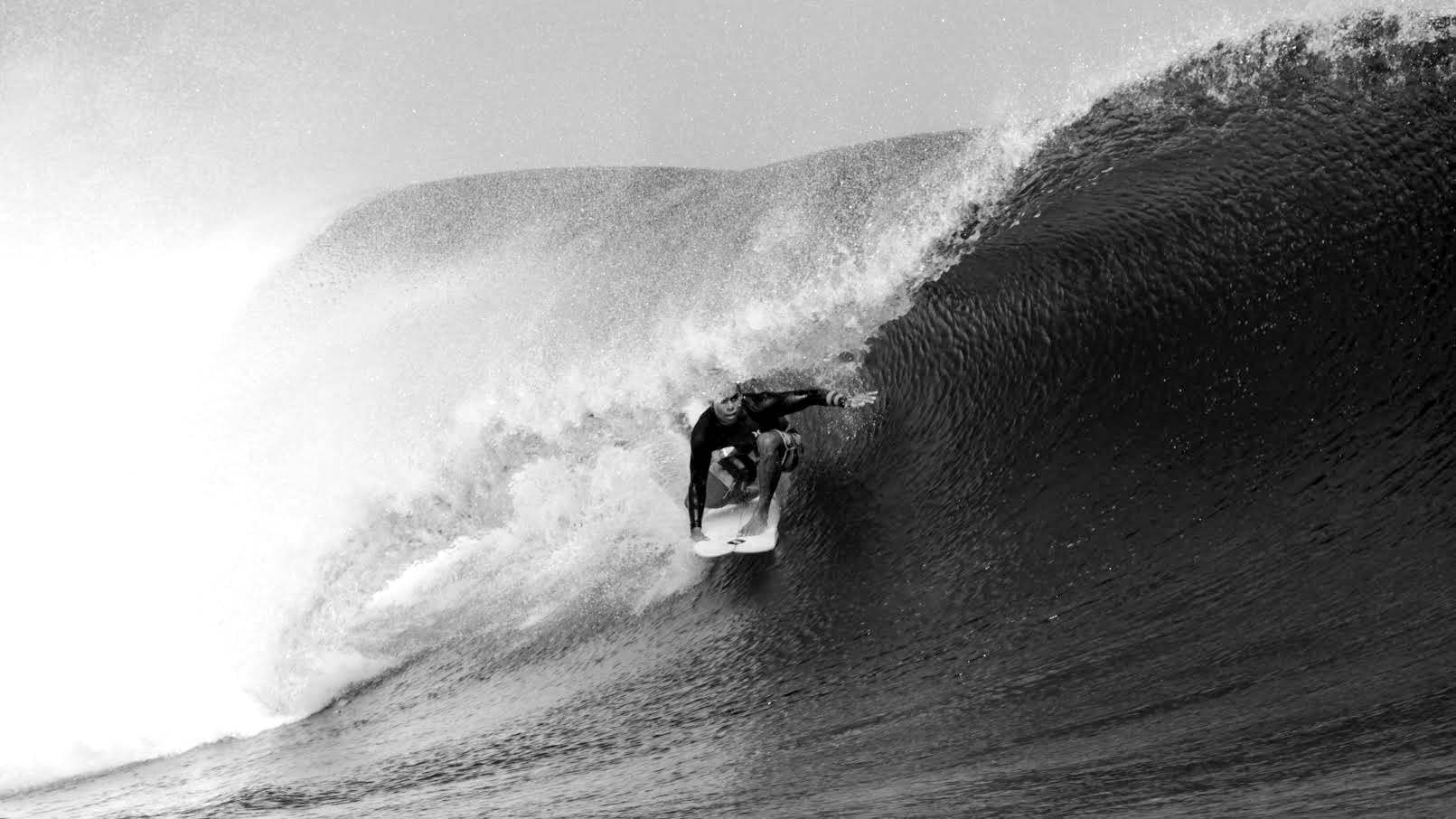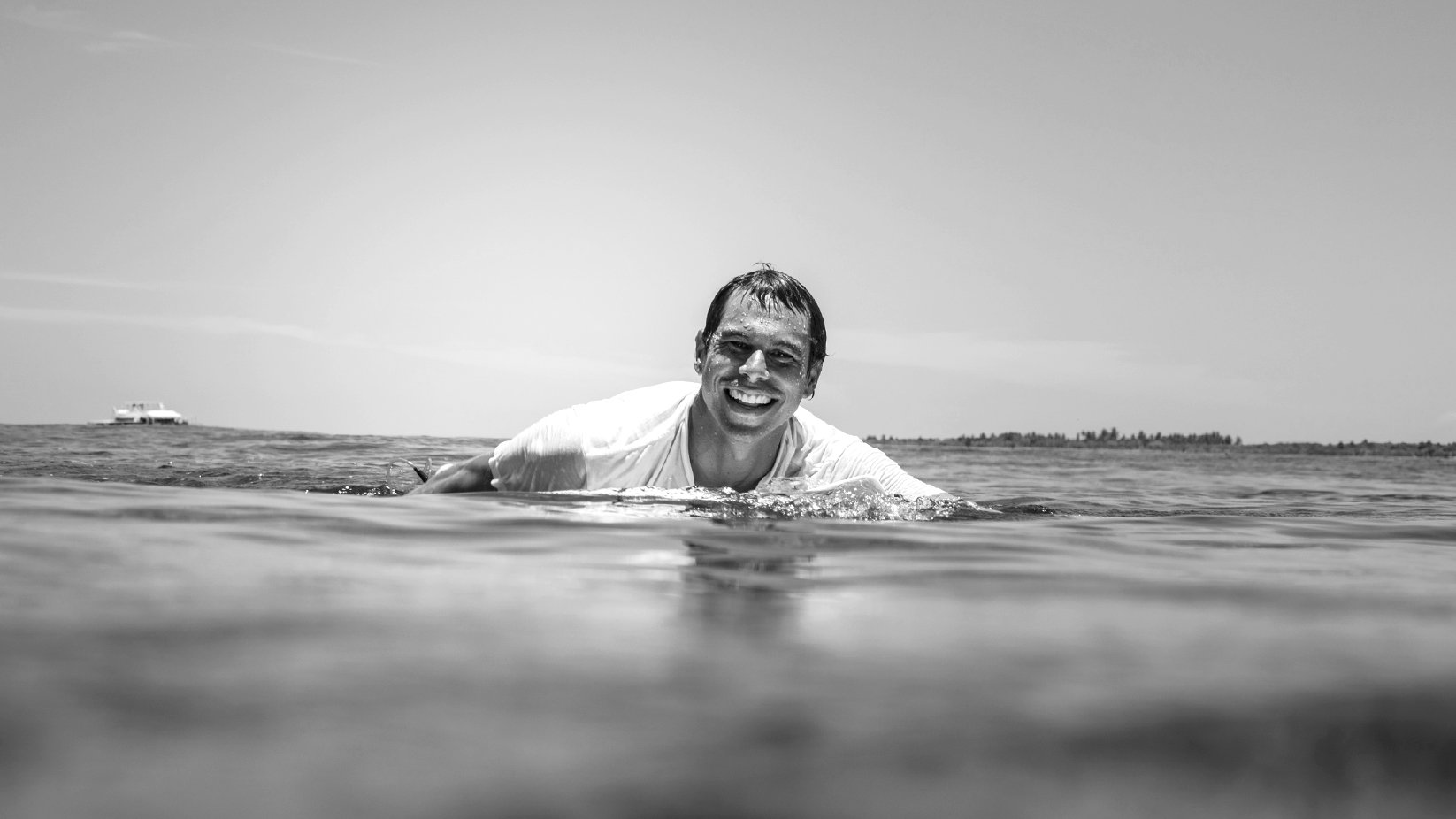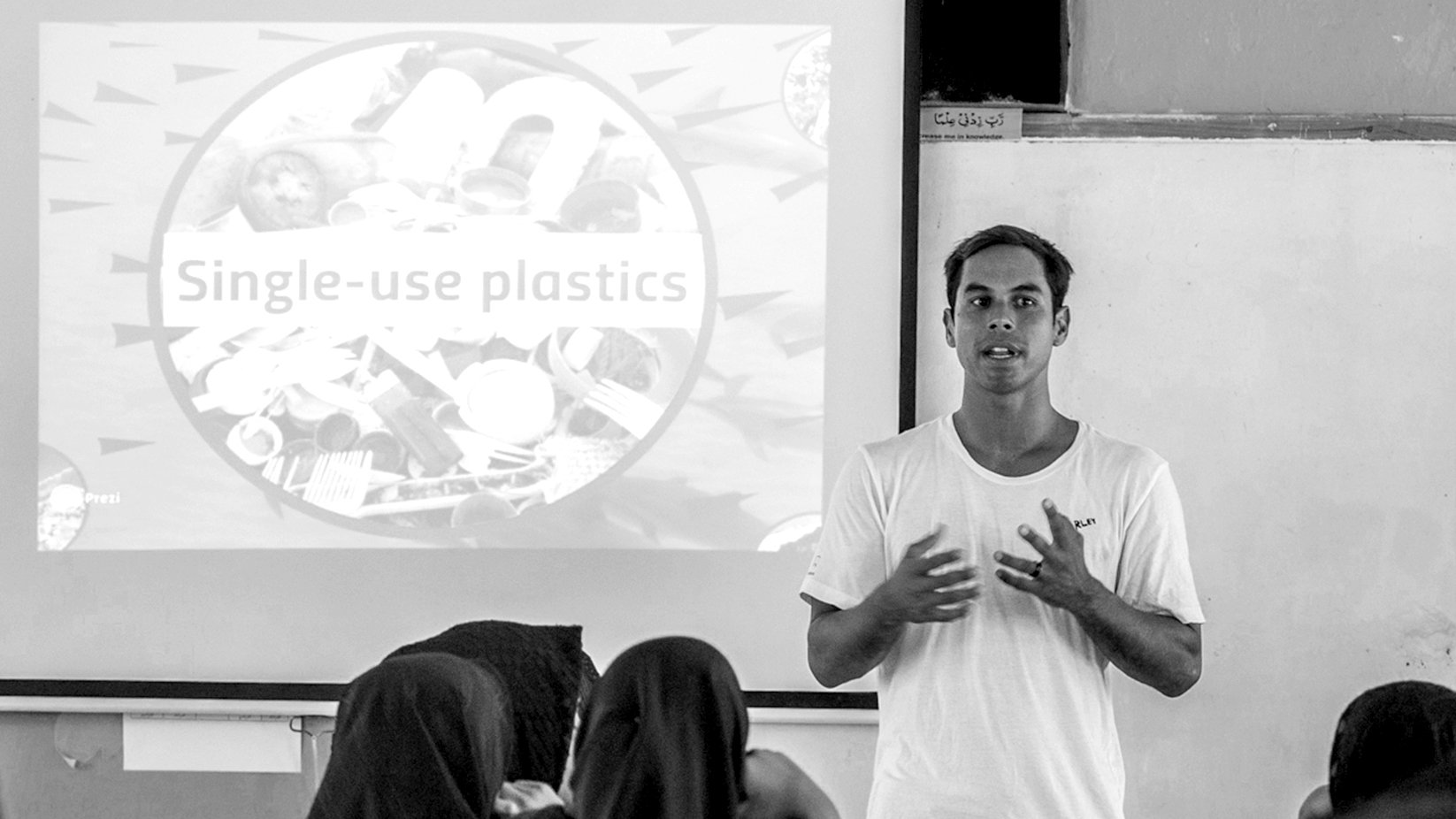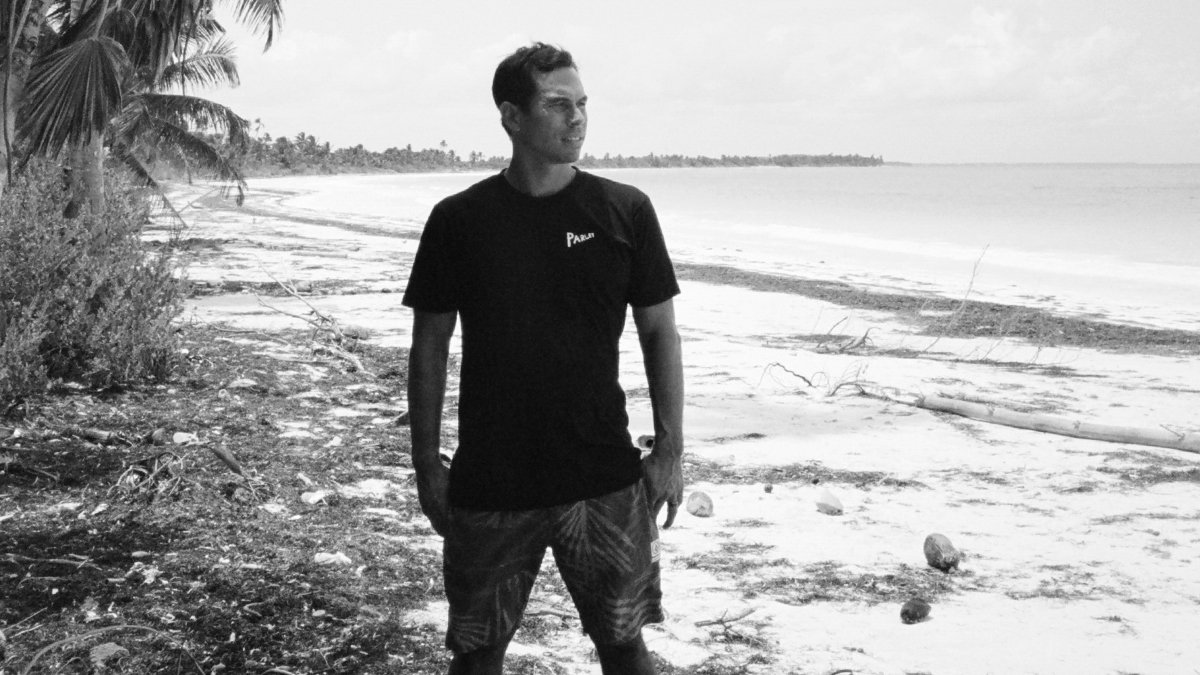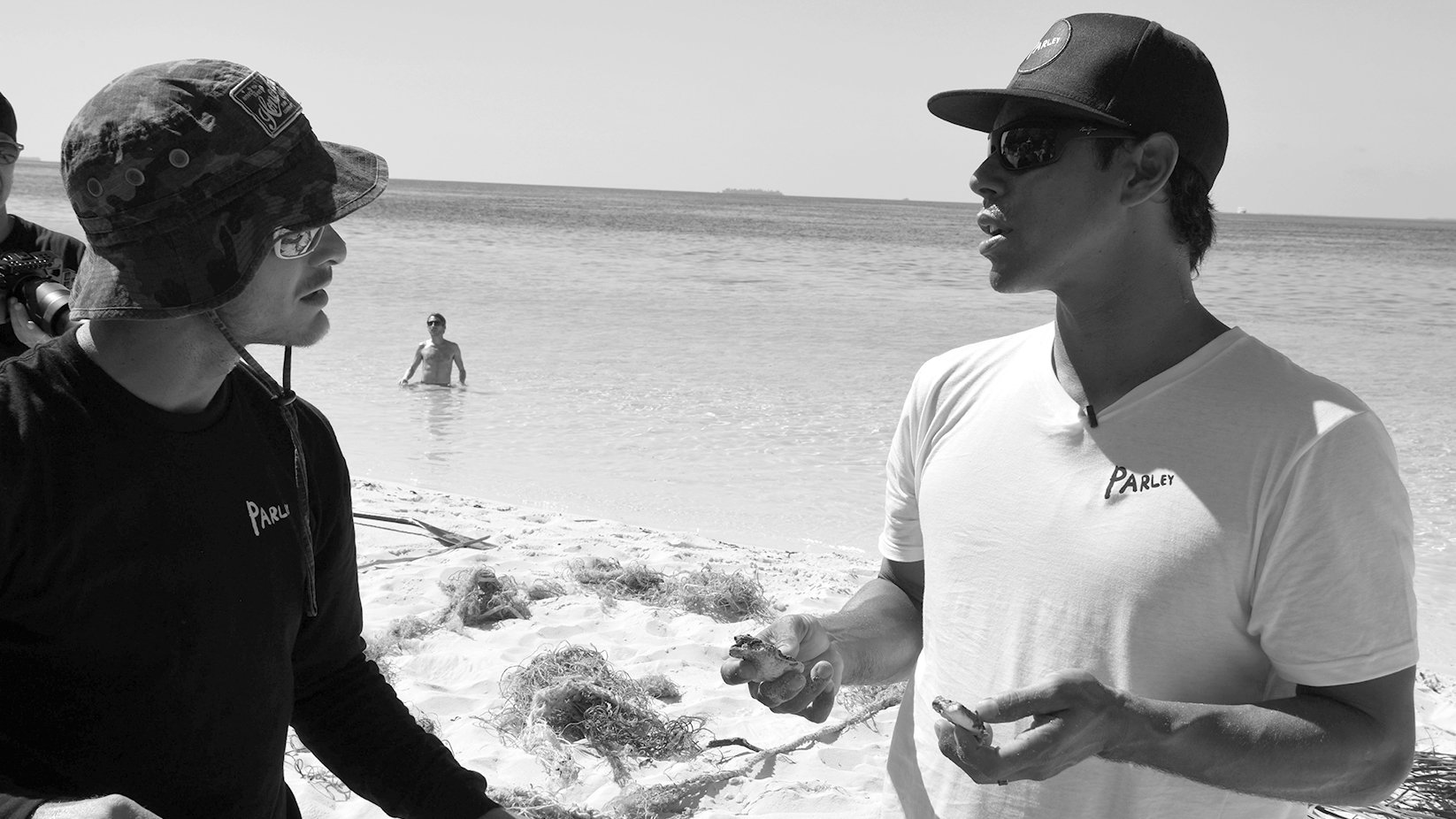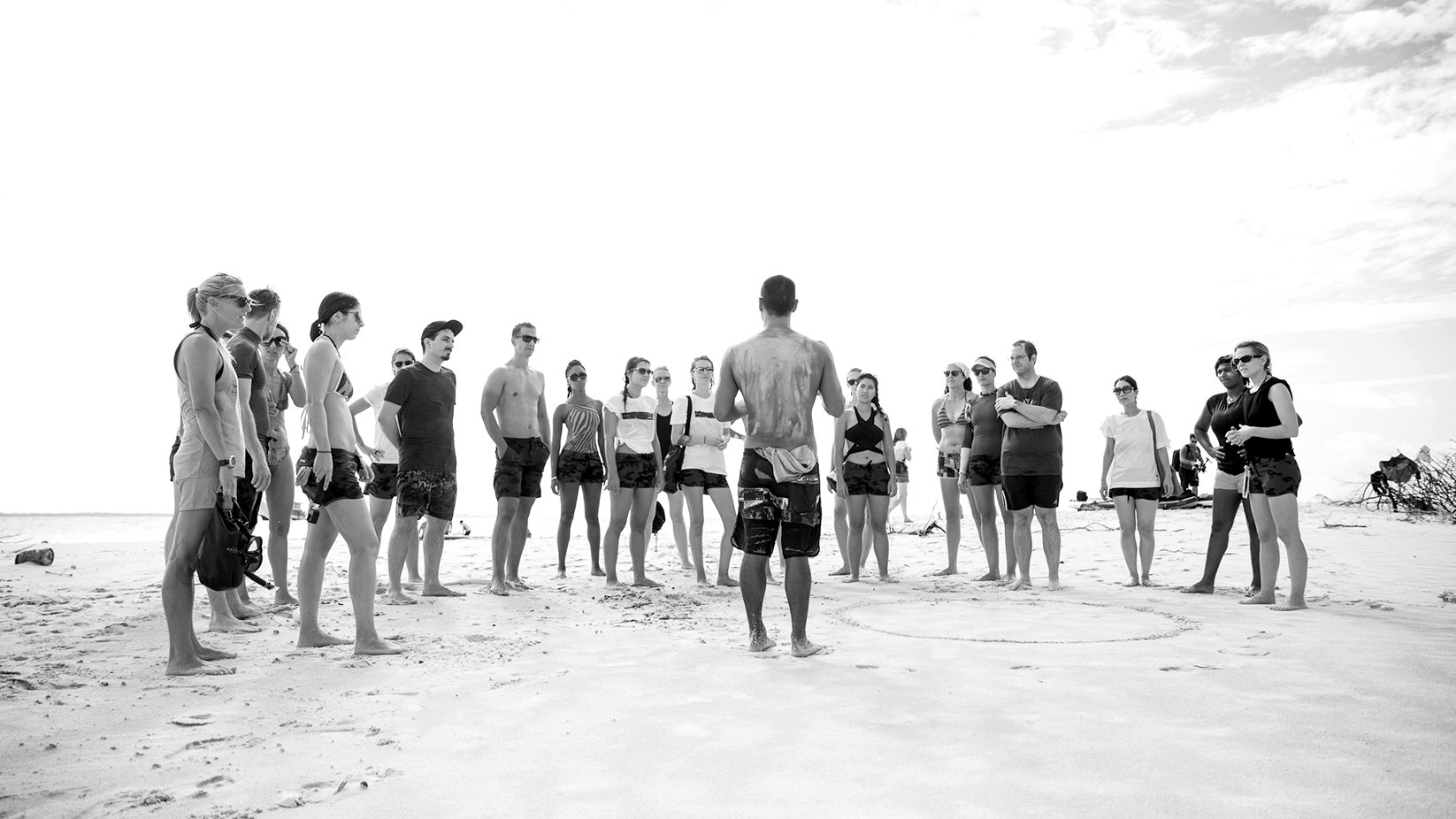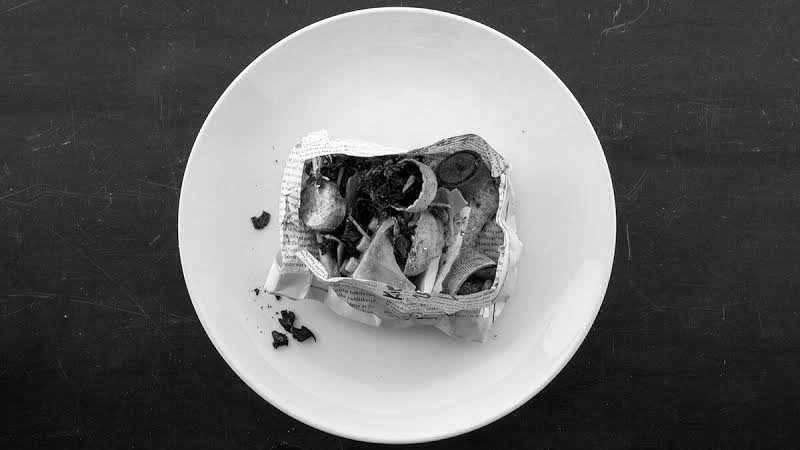Meet Kahi Pacarro of Sustainable Coastlines Hawaii
Greetings from “Away'“
The word “away” has a certain meaning on the most remote archipelago in the world. To many, Hawaii represents an idyllic escape, a vacation destination of lush biodiversity, volcanic panoramas, surf, sand, sun and aloha — the paradise essentials epitomized on its postcards. What is less understood among outsiders, in addition to a 1500-year-old native culture rooted in Polynesia, is Hawaii’s battle with plastic pollution.
Due to its bathymetry, predominant northeast trade winds and proximity to the North Pacific gyre, the Hawaiian islands act like a catcher’s mitt for marine debris. Even the most remote and hard-to-reach shorelines are plagued by multicolored fragments of our throwaway society. Many of these items are familiar (toothbrushes, bottles, bottle caps, straws, cigarette butts, plastic bags, styrofoam food containers and single-use utensils). Some pollutants are local, but most hail from far-away origins, carried by wind and currents across the Pacific from Asia. Other items, like derelict fishing gear and ghost nets, highlight the related threats of overfishing and a lack of law enforcement on the high seas. Always they deliver the same message: there is no away.
In 2010, a group of 10 friends got together to do something about the marine debris problem. That group has since grown into one of the world’s largest marine debris cleanup organizations. Every year, our partners Sustainable Coastlines Hawaii rally thousands of volunteers in beach cleanups and reach thousands more through educational initiatives and partnerships — largely because people like Kahi Pacarro, Parley Collaborator and Executive Director of SCH, wake up every day and decide to be part of the solution.
1. How did your world travels inspire you to leave a real estate career and become a full-time ocean advocate?
Before being a business man, I am and always will be a “surfer." I realized that my success in business was having detrimental environmental effects on my passion but at the same time without it I may have never seen nor been inspired to do something about it. Many of the iconic surf locations we traveled to were being ruined by pollution, overdevelopment, crowds, and just lame attitudes. When I came back home to Hawaii an opportunity arose to remedy the status of the public's perception on our oceans and coastlines. I jumped at it and convinced a bunch of friends to come with me.
2. What keeps you driven and positive when facing the realities of plastic pollution day after day, after day?
I’m seeing change in public perception. I see laws being passed that protect our enviroment and minimize plastic use. Parents seeking us out to thank them for inspiring their keiki. I am being invited into businesses wanting to implement change. What keeps me driven is the fact that I see more people beginning to care and every year it seems to be increasing.
3. You like to pass around a bolus during your talks. Why?
Because it’s so cool!!! But really, it’s a good analogy of our own youth. Albatross adults set out to feed their child. They come back with what they think is food and feed it to their kids. In reality, it’s mostly plastic. What’s so different than what we are doing as parents to our kids? Processed foods wrapped in plastics contaminated with plastic.
At first, someone seeing a bolus for the first time will see that there are items within the bolus that they recognize or even use every day. Fostering that connection will initiate the most important realization. “If I don’t use those items, it’s impossible for me to be responsible for these items ending up in albatross.”
4. Which questions do you get asked most frequently at cleanups?
Q: What’s the weirdest thing you’ve found doing cleanups? A: A fleshlight, I didn’t know what it was until we Googled the brand name on the side (DISCLAIMER: not safe for work). We’re waiting to sneak it into one of our buddies’ bags next time they travel.
5. Are there questions you wish people would start asking more?
Q: What is the root of this problem? A: It’s multipronged but in my opinion, the short answer is that plastic is made out of oil and that corporate influence on our governments is too strong, which limits regulations that can curb production. Secondly, we eat too much commercially fished seafood forcing commercial fishermen to take bigger risks resulting in bigger losses of gear.
6. Why clean a beach if the plastic will arrive again tomorrow?
For SCH its two reasons:
First, the unaddressed beach would create a barrier for our endangered monk seal and turtles keeping them from coming ashore to bask, raise young, or nest.
Secondly, the cleanup is the best form of experience to wake up a consumer. After picking up so much plastic, they can’t help but be inspired to take steps to reduce their use.
7. How can we inspire the next generation to become better stewards (than we are)?
Redesign the 3 Rs. I feel like the 3 Rs are an instrument of industry. It doesn’t even include Refuse! It’s been designed to promote consumption. That’s what makes me so excited about the AIR Strategy. We also need to give kids real-world experiences to see the issues first hand, while encouraging innovation aimed at alternatives to plastic.
8. Which single-use plastic drives you insane?
Those single use flossing things that for some reason people tend to just throw on the ground. WTF!
9. There’s a disconnect between awareness and action. How do you build momentum and “stoke the fire” to bridge it?
We create events that represent the action and inspire awareness throughout them. Less talk, more walk. Or better yet, talk while you’re walking!
10. Why the need for Parley? How does our collaboration help you in your mission?
There is an underlying current that keeps industry and non-profits apart. Like a mediator, Parley helps to bridge the gap to create mutually beneficial partnerships. I believe the sustainable future is one focused on circular economies and good design. Pollution is the result of failed design and poor design is the result of cost cutting measures. Helping industry to see the unsustainability of short term gains and the need to be part of the solution is something I see Parley pushing for. That’s why they’re needed.
Specifically for SCH, Parley represents the outlet/conduit for our intercepted plastic. Without Parley, we could end up being forced to send all our debris to an incinerator or landfill. That doesn’t sit well within our circular economic goals.
Learn more: Follow Sustainable Coastlines Hawaii on Facebook and Instagram
#ParleyAIR #GreetingsFromAway

